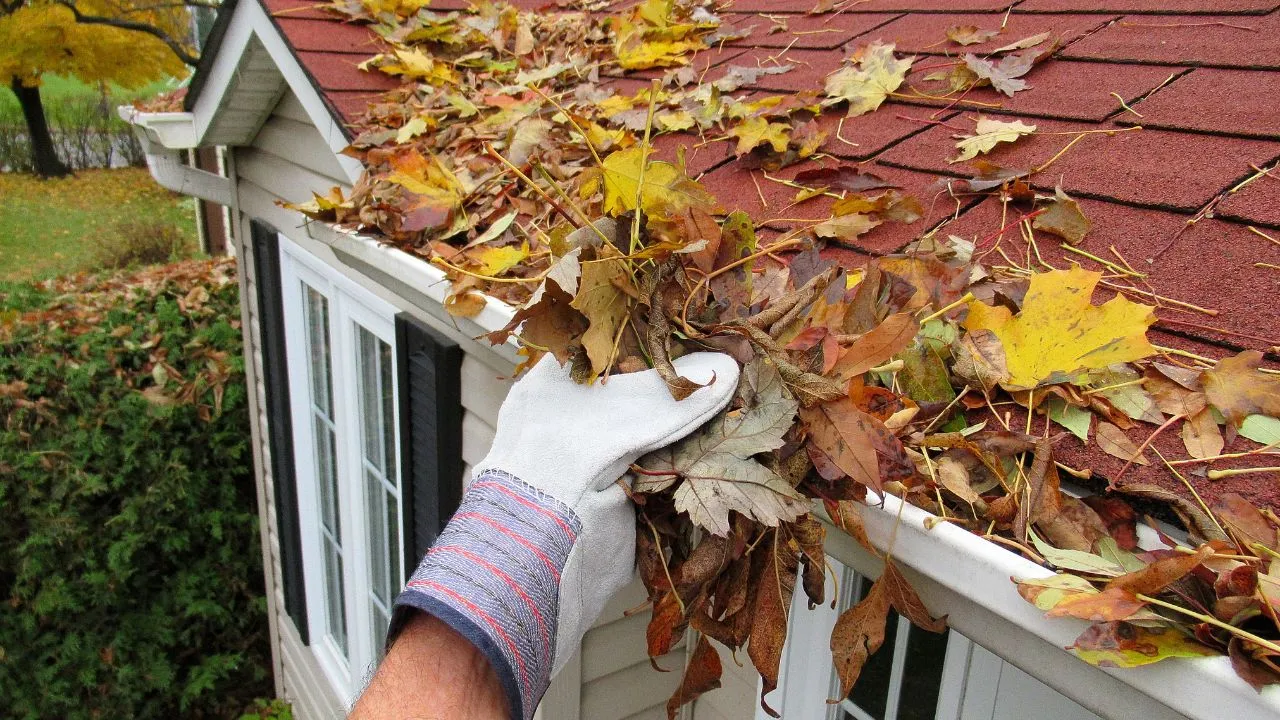With the onset of the new season, you need to make definite preparations for the forthcoming winter. We have compiled a list of the many essential tasks of home maintenance this season with special emphasis on roof check-up in fall. This is because your roof is the first shield of your home against weather conditions and any effort put in place to maintain it will save you the cost of repairing and or replacing it in the future. In this detailed article, let’s review five critical steps you should take immediately for your fall roof maintenance and useful recommendations to protect your home and its roof in the fall.
In the fall, through these few outlined tips,you can be in a position to maintain your roof strong enough to face any challenge that comes with the cold season. From checking the shingles, to the cleaning of the gutters, to the possible issues that are questionable, all of these parts are major contributors to the well-being of a home’s structure. Okay, let’s go deeper into the 5 things you should do this fall as a roof maintenance checklist.
1. Inspect and Repair Shingles
A key to fall roof maintenance is to inspect your shingles for signs of wear and tear. Throughout the summer months (a time of intense weather), your roof might have undergone exposure to extreme heat, UV rays and storms. This exposure can, however, result in the weakening or damage of your shingles. Although roofs are designed to withstand various elements, the cumulative effect of such conditions can be detrimental. Because of this, it is crucial to inspect your roof regularly, as neglecting it could lead to significant issues down the line.
1.1 Signs to Look For:
- Cracked or Curling Shingles: When the shingles are cracked or if the edges of shingles are curled, there is a need to repair or replace the shingles. For instance, a shingle that is torn may create pathways through which water penetrates the roof and causes leakage or destructs the roof fabric.
- Missing Shingles: Strong gusts of wind during summer showers may even snap off shingles from your roof. Missing shingles result in creating a path for water, which can easily damage your home – and with winter right around the corner, you do not want this type of situation to get any worse.
- Granule Loss: As time progresses, asphalt shingles may gradually lose their protective granules (which serve an important function), thus rendering them increasingly vulnerable to wear. It is crucial to consider that this deterioration can lead to significant issues. Although many homeowners may overlook this problem, the consequences can be severe because damaged shingles could allow water infiltration, leading to further complications.
1.2 Repairing Damaged Shingles
There may be shingles that have been damaged or are missing, this should also be repaired during the fall roof maintenance. Minor problems can easily be fixed by the homeowner, but, major problems will call for the services of a professional roofer. Tackling shingle damage early in the season is crucial; by doing so, homeowners can prevent more severe issues in the winter. However, neglecting these repairs could lead to complications down the line. Although it may seem like a minor concern at first, this proactive approach is essential because it safeguards the integrity of the roof. Furthermore, addressing these issues promptly can save homeowners significant costs in the long run.
Free Roof Inspections. Fast. Reliable.
Is your roof ready to weather the storm? Dont risk property damage. Our free roof inspections provide expert analysis to identify potential issues before they become costly problems.
2. Clean and Maintain Gutters
Gutters are an essential part of the roof, helping to prevent water from damaging your home’s foundation. Nevertheless, during the fall, various debris such as leaves, twigs, etc may get accumulated on the surface of the gutter, preventing the proper flow of water. When gutters get clogged it can result in water accumulating on your roof which may lead to leaks, ice dams and various forms of water damage.
2.1 How to Clean Gutters
Cleaning your gutters is an essential part of fall roof maintenance, and it’s a task that should be done before winter sets in. Follow these steps to ensure your gutters are functioning correctly:
Remove Debris: Begin by extracting leaves, twigs and various debris from the gutters, either manually or with the aid of a gutter scoop. It is essential to guarantee that the downspouts remain unobstructed (this is crucial).
Flush with Water: After that, with a garden hose wash out any debris that may still be around. This will also help you to discover other leakages or areas that the water has not drained well.
Check for Damage: When cleaning the gutters take time and look for any signs of damage such as sagging areas, rusty areas or any cracks. In case of any problems, then you fix or replace the affected parts to enhance the performance of the gutters.
2.2 Gutter Maintenance Tips
Install Gutter Guards: In order to reduce the amount of debris in your gutters, it may be advisable to get gutter guards. These protective covers enable the passage of water through them while they prevent intrusion of any foliage such as the leaves and any debris.
Regular Cleaning: Even with the installation of gutter guards (which are designed to reduce debris accumulation), it remains crucial to clean your gutters at least twice a year: once in the fall and once in the spring.
Maintaining clean and well-functioning gutters is essential (this is crucial) for safeguarding both your roof and your home against potential water damage ensuring your fall roof maintenance is effective.
3. Check and Seal Flashing
Flashing is the metal used to cover and protect junctions or gaps on the roof, or at the chimney, vents, skylights and where the roof joins the wall vertically. Flashing properly installed and sealed keeps you from having water penetrate your house in the first place. Each of the below fall roofing tips should be taken to ensure that you examine the flashings for signs of wear or damage and make the required repair.
3.1 Common Flashing Problems
Rust or Corrosion: Over time, metal flashing may succumb to rust or corrosion (especially when exposed to moisture). Rusted flashing can facilitate water seepage, which ultimately damages the roof’s structure.
Loose or Missing Flashing: Flashing is vulnerable to strong winds or movement of the materials around it and can result in flashing becoming loose or entirely dislodged. A lack of flashing leaves some areas exposed, so they will collect water which heightens the risk of leakage.
Cracked Caulk or Sealant: The caulk or sealant that secures flashing can crack or deteriorate over time (this reduces its effectiveness at preventing water penetration). Although maintenance can mitigate these issues, neglect can lead to significant damage.
3.2 How to Repair Flashing
To effectively tackle any concerns regarding your roof’s flashing during the fall maintenance season, one must consider several key actions:
Re-caulk Seams: First, re-caulking seams is essential: should you observe cracked or deteriorating caulk around the flashing, it is imperative to remove the old caulk (as this can lead to further issues) and subsequently apply a new, high-quality roofing sealant to ensure the seams are properly resealed.
Replace Damaged Flashing:In addition, replacing damaged flashing may be necessary; if the flashing itself is compromised, you might need to replace that specific section. This process can involve removing the damaged material and installing a new piece. However, in certain situations, this task is best left to a professional roofer because they possess the expertise required for such repairs. Proper maintenance of flashing is crucial, as it ranks among the most significant fall roofing maintenance tips to avert leaks and mitigate water damage during the colder months.
4. Inspect Attic Ventilation and Insulation
Your roof and the attic are designed to complement each other with respect to temperature control and resisting moisture. Some common issues with the attic which may arise due a lack of sufficient ventilation, or little or no insulation may include issues such as ice-dams, mold growth among others during the winter. One of the essential fall roofing tips which one must follow is attic ventilation and insulation.
4.1 Check for Proper Ventilation
Proper attic ventilation lets warm air come out from your attic while at the same time does not allow moisture to build within the attic area. In the fall, it is recommended to ensure that the attic maintains adequate ventilation and that the vents themselves are not obstructed. Check that soffit vents, ridge vents, and or gable vents are clean and are in good working order.
4.2 Inspect and Upgrade Insulation
Insulation of your attic is an important aspect that determines the flow of warm and cool air through your home. During your fall roofing maintenance, check the insulation for adequacy and moist. If you observe some of the sheathings or lack of them are thin, then it may be wise to add to the home energy envelope.
Sufficient insulation in the attic (which is often overlooked) plays a crucial role in regulating your home’s temperature. It maintains warmth during winter and coolness in summer. During the maintenance of your roof in the fall, it’s important to inspect the insulation (this ensures) that it is evenly distributed and devoid of moisture.
Enhancing insulation and ventilation in the attic not only safeguards your roof from potential damage; it also contributes to lowering heating costs in winter. Although it may seem like a minor detail, effective insulation can lead to significant savings.
5. Trim Overhanging Branches and Remove Debris
Leaves and branches overhanging your roof and chunks of ice melting off during the fall and winter can be very dangerous to your roof. During the fall season, one of the roof maintenance tips is to trim back trees and clear debris to effectively reduce the risk of damage to your roof and gutters.
5.1 Trim Overhanging Branches
Branches that extend over your roof can create numerous issues, including: Damage to Shingles (which occurs when branches rub against the surface), leading to deterioration and potential leaks. Additionally, Falling Limbs are a risk; heavy branches may break off during storms or due to the weight of snow and ice, thus causing significant damage to your roof. Increased Debris is another concern, as overhanging branches often drop leaves, twigs and other materials onto your roof and into your gutters. This can lead to clogs and subsequent water damage. Although trimming back those overhanging branches is advisable, it is essential to maintain a distance of at least 10 feet from your roof. This preventive measure can help mitigate the risk of damage, however, many homeowners overlook its importance.
5.2 Remove Roof Debris
As many trees shed in the fall, leaves and debris often collect on your roofs and over time they retain water and breed moss and algae. This moisture can also lead to your shingle to wear out much quicker than it should have. Although it may seem tedious, regularly clearing debris from your roof is essential (because it helps prevent water accumulation) and ensures your roof remains in optimal condition.
Conclusion
Roof maintenance is an important part of home maintenance especially during the wintertime, or before the winter sets in. You should consider doing it during the fall. With reference to these five key fall roofing tips, this means that one would be saving money in the long run as well as preventing damage to the roofs. Tasks such as inspecting and mending shingles, cleaning gutters and trimming branches that hang overhead are all crucial (2) in maintaining the integrity of your roof.
In case you are in doubt about handling these tasks on your own, it is advisable to hire a roofing contractor for your roof maintenance in fall. And the best way to be sure that your roof is in good shape to handle anything that the winter season can throw in, is to have your roof inspected and maintained regularly.
Do not delay until the initial snowfall to tackle potential roofing problems. Start your fall maintenance efforts today; this proactive approach will provide you with peace of mind, knowing your home is well-protected against harsh weather conditions.
Prepare your residence for the winter months (which can be quite harsh) with the expert fall roof maintenance offered by River City Roofing! Our team of professionals is not only ready to inspect, clean and repair your roof, but also dedicated to ensuring that it remains in optimal condition to withstand the colder weather. Don’t wait until minor issues escalate into expensive repairs—this is a crucial step. Contact River City Roofing today to schedule your fall roof maintenance and keep your home safe and secure throughout the season! Call us now or visit our website to book your appointment.



